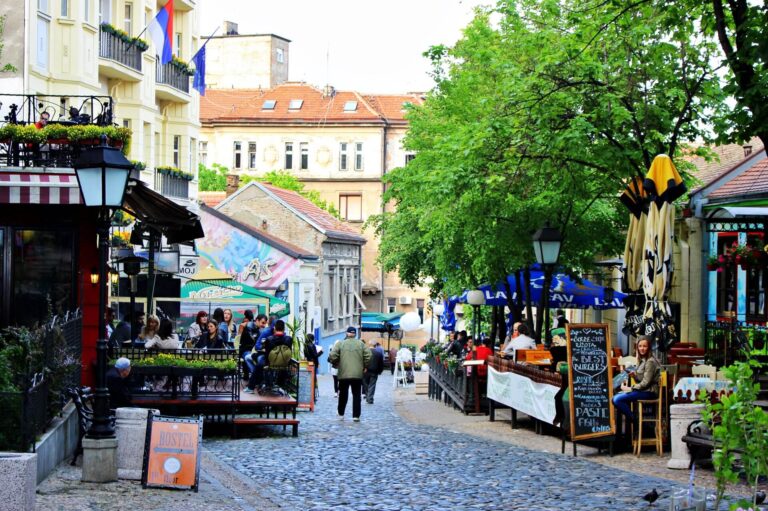Food
Food Categories, unlike tags, can have a hierarchy. You might have a Jazz category.
Search
Food Categories, unlike tags, can have a hierarchy. You might have a Jazz category.
Review Categories, unlike tags, can have a hierarchy. You might have a Jazz category.
Guides Categories, unlike tags, can have a hierarchy. You might have a Jazz category.
Travel Categories, unlike tags, can have a hierarchy. You might have a Jazz category.
![]() By Quppy
By Quppy
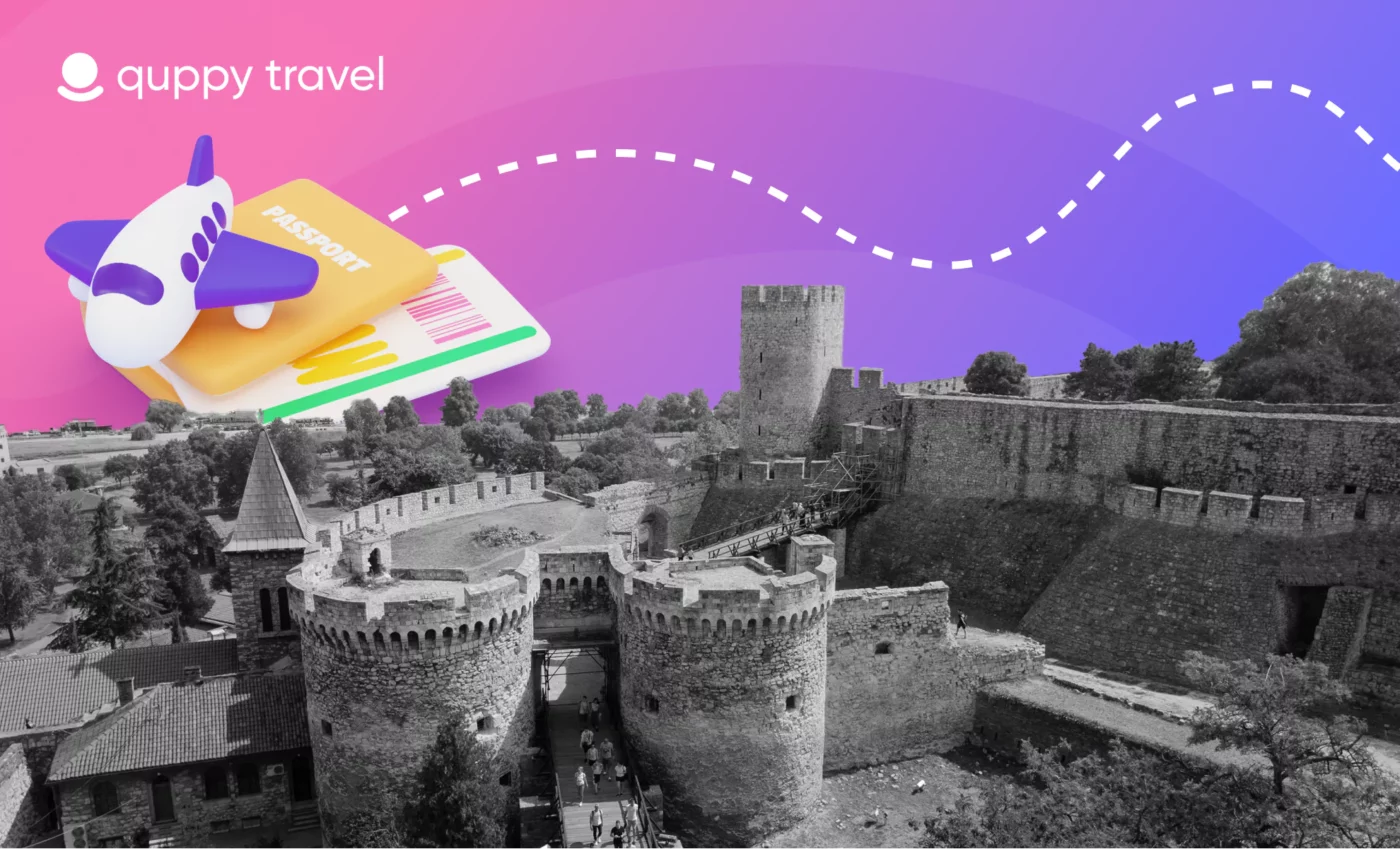
Is there a European capital with a more turbulent history than Belgrade? On the border of empires and the confluence of the great rivers Danube and Sava, it is one of the oldest cities on the European continent. In Belgrade, high culture is combined with a cheerful spirit. You can feel this lust for life on Skardarlija, on Bohemian Street, or on rafting, party boats moored to the Danube and Sava. The Belgrade Fortress dominates the cityscape, while Orthodox churches and palaces of the Serbian royal family emerged after Serbian independence in the 19th century.
On a high ridge where the Danube and Sava rivers meet, Belgrade Fortress once contained the entire city and survived 2,000 years of conflicts.
History is at every turn in the fortress, from the Roman well to the medieval gates of Despot Stefan Lazarević. The interior of the fortress consists of a beautiful park with various military weapons walking you through the whole history of the Belgrade beginning.
The Pobednik (Conqueror) is a postcard monument, a statue with a sword and a falcon that stands atop a Doric column. This dates from 1928 and marks Serbia’s defeat of the Ottoman and Austro-Hungarian Empires in World War I.
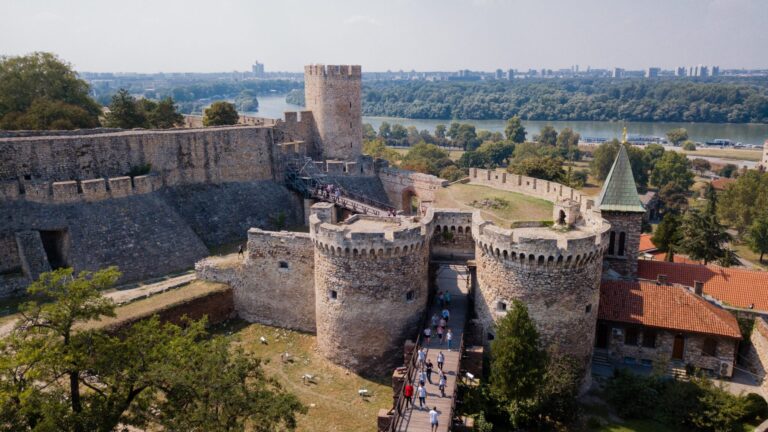
The largest Orthodox church in the Balkans and the second largest in the world, St. Sava is an indispensable monument of the Serbian capital.
High on the Vračar plateau, you can see the white granite and marble walls of the church from any approach to Belgrade, and the 50 bells that ring at noon resound throughout the city.
The temple was built on the site where the Grand Vizier of the Ottoman Empire, Sinan Pasha, burned the relics of St. Sava after his icon adorned the flags during the Serbian uprising in 1594. Construction began in 1935, 340 years after this event, and ended in 1989.
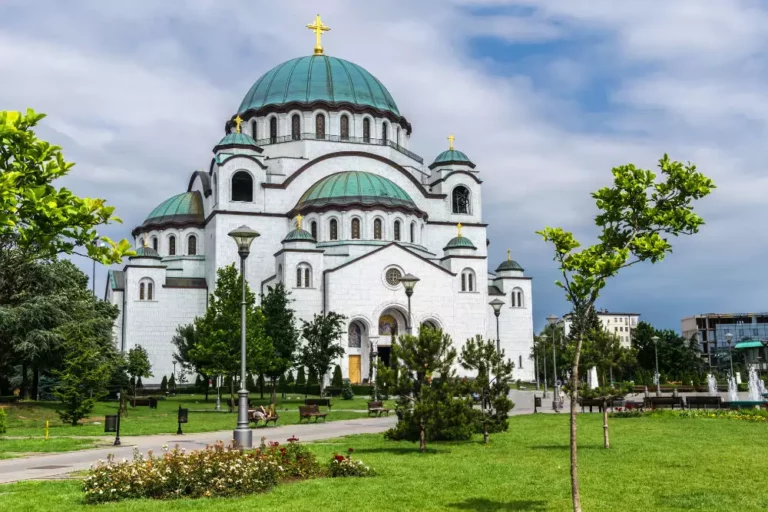
This cavernous neo-Byzantine church is one of the largest in Serbia, and while its exterior structure was completed in the 1930s, interior work continues. Its majestic iconostasis was only completed in the 1990s: the frame is made of marble, while the icons inside and the painting of the Last Supper were painted by Đuro Radulović, an academic artist from Belgrade.
Works oin the crypt began in 2007 under the porch, and the tombs of the 19th century clergy and the Serbian royal family were moved.
The old St. Mark’s Cathedral, founded immediately after Serbia gained independence, was destroyed during the German bombing of Belgrade in 1941.
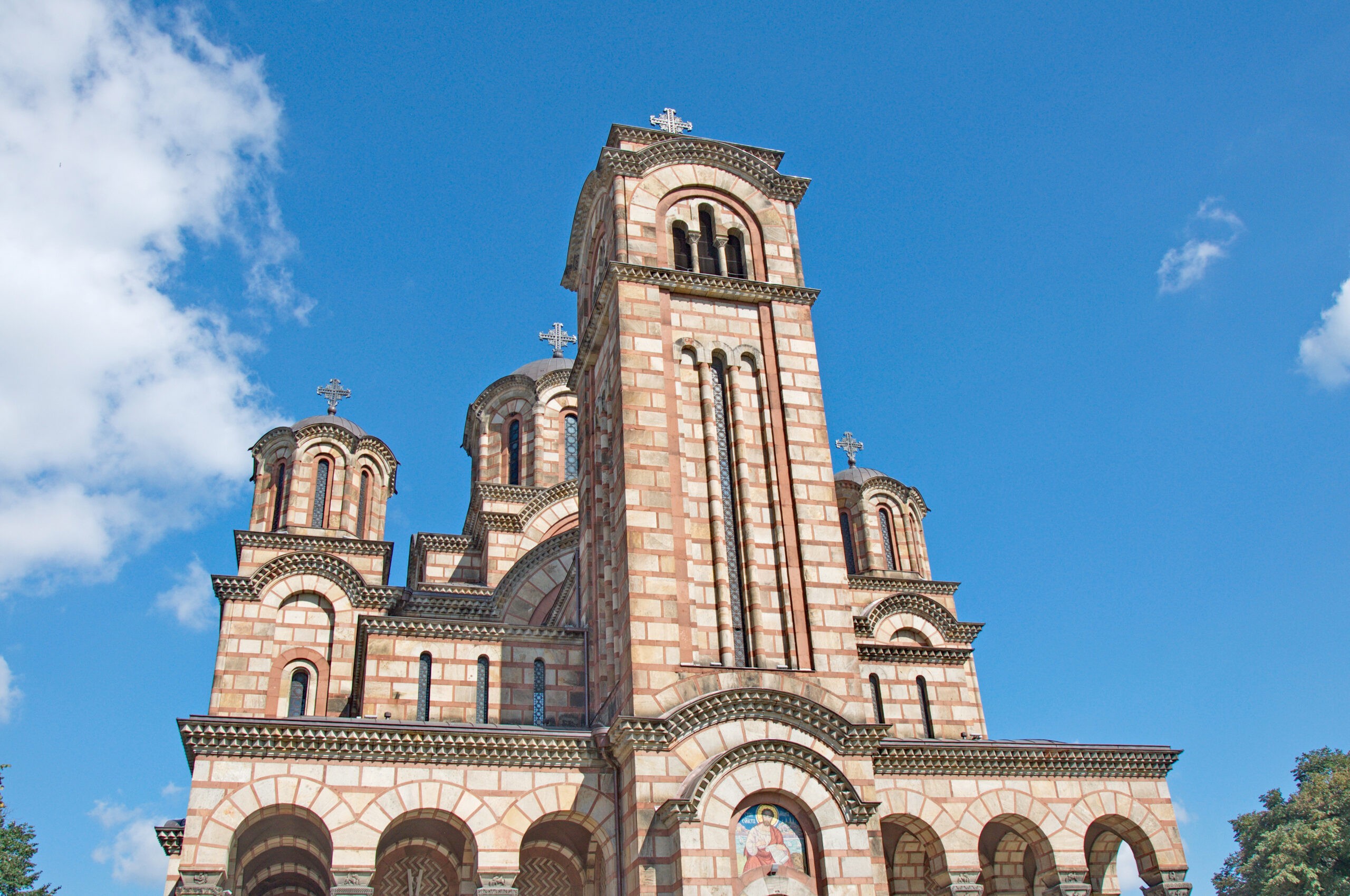
In the oldest part of Zemun, a monument from the time of the Austro-Hungarian Empire, rises above the right bank of the Danube river.
The Gardos Tower is also known as the Millennium Tower as it was built in 1896 to commemorate the 1000th anniversary of the Hungarian settlement in the Pannonian Plain.
In an eclectic style, the Tower was built on the ruins of a medieval fortress and was one of several major projects in what was then Hungary dedicated to this anniversary.
Inside there is a small exhibition about the legendary history of Zemun and Gardosh, and you can go upstairs for a magnificent view of the Danube river and its confluence.
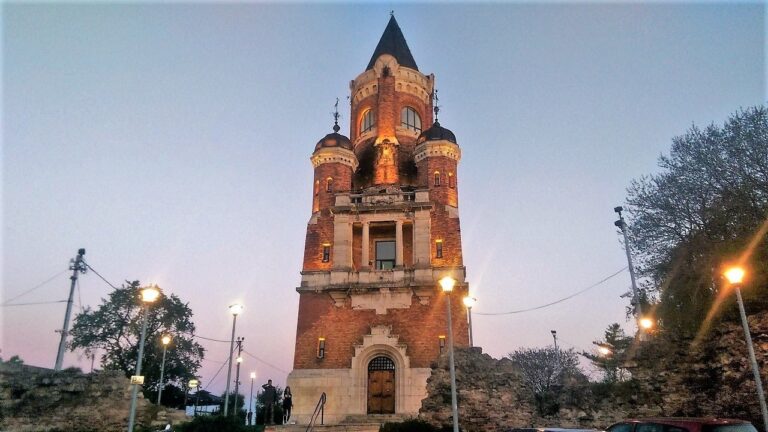
Stretching diagonally across the Old Town from the fortress to the Republic Square, Knez Mihailova is a pedestrian street where locals shop and have fun.
On one of the most expensive streets in the city per square meter near Prince Mikhailov, there are elite boutiques and shops of international brands. They are joined by dozens of restaurants and bars, so if you come at almost any time of the day or night, you will encounter crowds of shoppers, couples, or revelers.
The path to the fortress is lined with attractive rows of neoclassical stucco mansions with wedges and cornices.
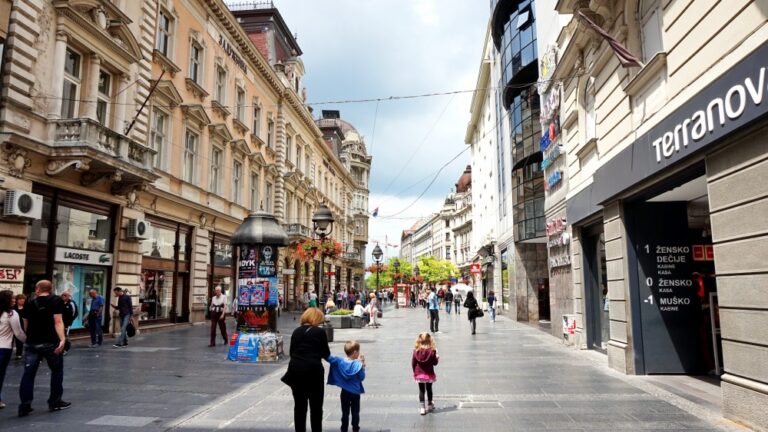
In the southern part of Knez Mihailov is the Republic Square with some of the most important sights of the city and the business district where Belgrade is developing most dynamically.
Here stand the Serbian National Theater and the National Museum, as well as the monument of Prince Mikhailo. This statue, created by the Italian sculptor Enrico Pazzi, depicts Mihailo Obrenović, twice Serbian prince in the mid-1800s and the key figure in the fight for the independence of the Balkans from the Ottoman Empire.
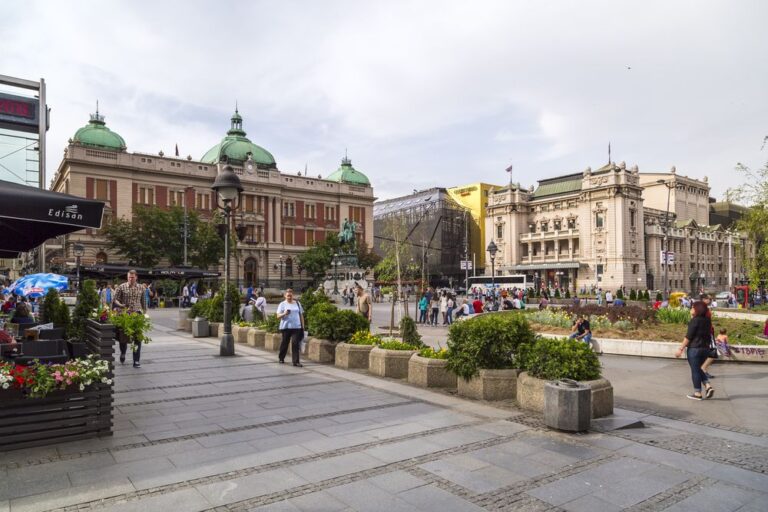
Skadarlija has been a bohemian place since the 1800s and is Belgrade’s answer to Montmartre. Like its Parisian counterpart, Skadarlija’s glory days came in the early 1900s, when well-known but cash-strapped Serbian singers, musicians, writers and poets lived, worked and performed here.
This spirit of the Belle Époque is preserved in the iron gas lanterns, the restaurant terraces, the foliage, the canopies, and the trompe l’oeil façade on the opposite wall.
Come and enjoy the cafe nightlife, traditional Serbian food like rostil (grilled meat) alongside with artistic performances and street performers.
